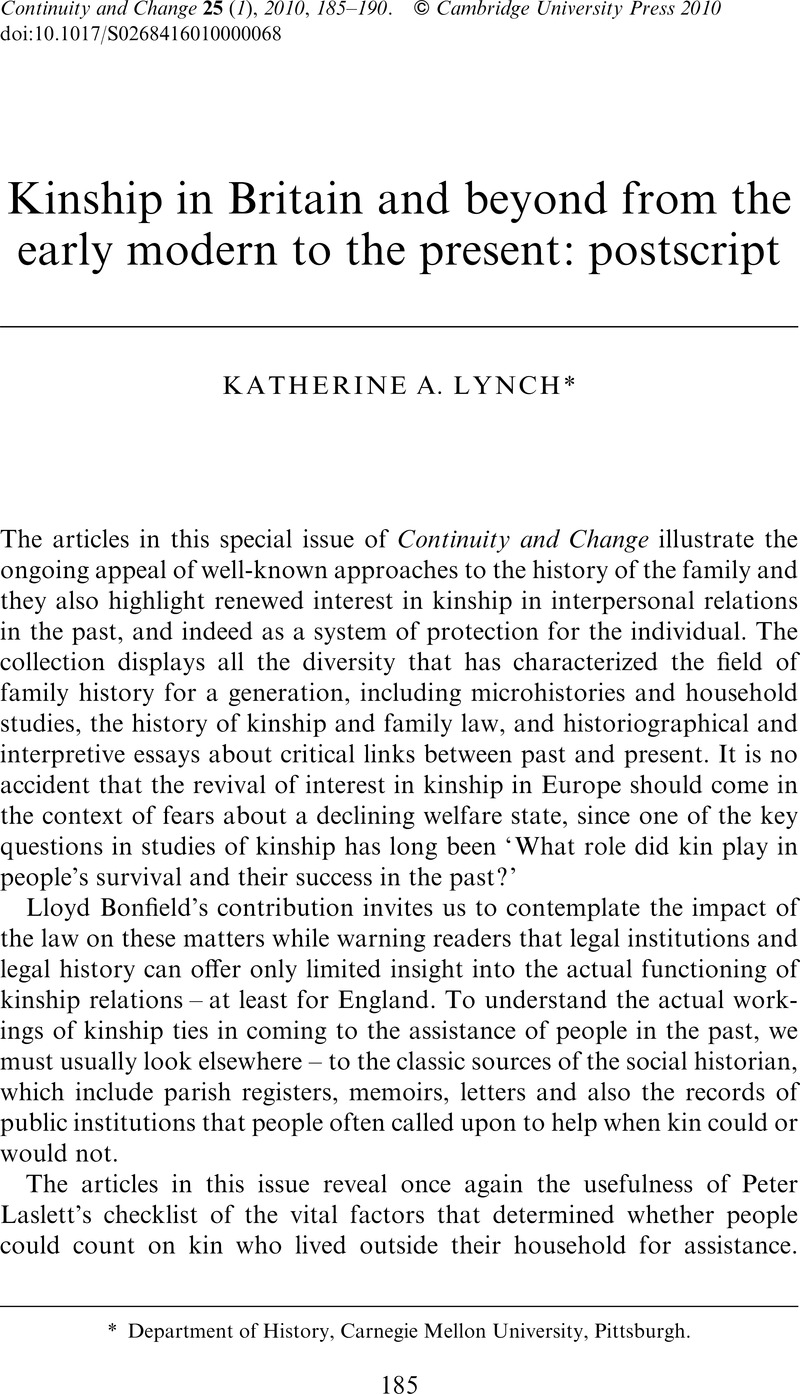No CrossRef data available.
Article contents
Kinship in Britain and beyond from the early modern to the present: postscript
Published online by Cambridge University Press: 04 May 2010
Abstract

- Type
- Research Article
- Information
- Continuity and Change , Volume 25 , Special Issue 1: SPECIAL ISSUE ON KINSHIP IN BRITAIN AND BEYOND FROM THE EARLY MODERN TO THE PRESENT , May 2010 , pp. 185 - 190
- Copyright
- Copyright © Cambridge University Press 2010
References
ENDNOTES
1 Laslett, Peter, ‘Family, kinship and collectivity as systems of support in pre-industrial Europe: a consideration of the ‘nuclear-hardship’ hypothesis', Continuity and Change 3, 2 (1988), 153–75, p. 157CrossRefGoogle Scholar.
2 Pierre Bourdieu, trans. by Richard Nice, Outline of a theory of practice (Cambridge, 1977), 32–8. Depending upon the rank and status of the persons involved, the appearance of kin at ceremonial events could, of course, bring benefits.
3 See Robert Jütte, Poverty and deviance in early modern Europe (Cambridge, 1994), 83–99.
4 Katherine A. Lynch, Individuals, families and communities in Europe, 1200–1800: the urban foundations of Western society (Cambridge, 2003).


